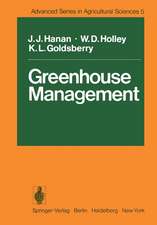Land of the Underground Rain: Irrigation on the Texas High Plains, 1910-1970
Autor Donald E. Greenen Limba Engleză Paperback – 1973
The evolution from windmills to the modern high-speed irrigation pumps took place over several decades. Three phases characterized the movement toward irrigation. In the period from 1910 to 1920, large-volume pumping plants first appeared in the region, but, due to national and regional circumstances, these premature efforts were largely abortive. The second phase began as a response to the drouth of the Dust Bowl and continued into the 1950s. By 1959, irrigation had become an important aspect of the flourishing High Plains economy. The decade of the 1960s was characterized chiefly by a growing alarm over the declining ground water table caused by massive pumping, and by investigations of other water sources.
Land of the Underground Rain is a study in human use and threatened exhaustion of the High Plains' most valuable natural resource. Ground water was so plentiful that settlers believed it flowed inexhaustibly from some faraway place or mysteriously from a giant underground river. Whatever the source, they believed that it was being constantly replenished, and until the 1950s they generally opposed effective conservation of ground water. A growing number of weak and dry wells then made it apparent that Plains residents were "mining" an exhaustible resource.
The Texas High Plains region has been far more successful in exploiting its resource than in conserving it. The very success of its pump technology has produced its environmental crisis. The problem brought about by the threatened exhaustion of this resource still awaits a solution.
This study is the first comprehensive history of irrigation on the Texas High Plains, and it is the first comprehensive treatment of the development of twentieth-century pump irrigation in any area of the United States.
Preț: 263.54 lei
Nou
Puncte Express: 395
Preț estimativ în valută:
50.43€ • 52.59$ • 41.92£
50.43€ • 52.59$ • 41.92£
Carte tipărită la comandă
Livrare economică 20 martie-03 aprilie
Preluare comenzi: 021 569.72.76
Specificații
ISBN-13: 9780292746299
ISBN-10: 0292746296
Pagini: 326
Dimensiuni: 152 x 229 x 15 mm
Greutate: 0.48 kg
Ediția:Revised
Editura: University of Texas Press
Colecția University of Texas Press
ISBN-10: 0292746296
Pagini: 326
Dimensiuni: 152 x 229 x 15 mm
Greutate: 0.48 kg
Ediția:Revised
Editura: University of Texas Press
Colecția University of Texas Press
Notă biografică
Donald E. Green received his Ph.D. from the University of Oklahoma and has taught at Central State University in Oklahoma.
Cuprins
- Acknowledgments
- Introduction
- 1. The Barrier to Settlement
- 2. The Western Irrigation Movement and the Great Plains
- 3. Water Resources of the Southern High Plains
- 4. The Adaptation of Pump Irrigation Technology to the Great Plains
- 5. Land Speculators and the Beginnings of Irrigation on the Texas High Plains, 1900–1910
- 6. The Land Speculator as a Promoter and Developer of Irrigation on the Texas High Plains
- 7. Early Failure of Pump Irrigation, 1910–1920
- 8. Dust Bowl, New Deal, and the Revival of Irrigation
- 9. The Expansion of Irrigation, 1940–1960
- 10. The Problem of Ground-Water Conservation
- 11. The Contemporary High Plains
- Conclusion
- Appendix
- Bibliography
- Index
Descriere
Land of the Underground Rain is a study in human use and threatened exhaustion of the High Plains' most valuable natural resource.









